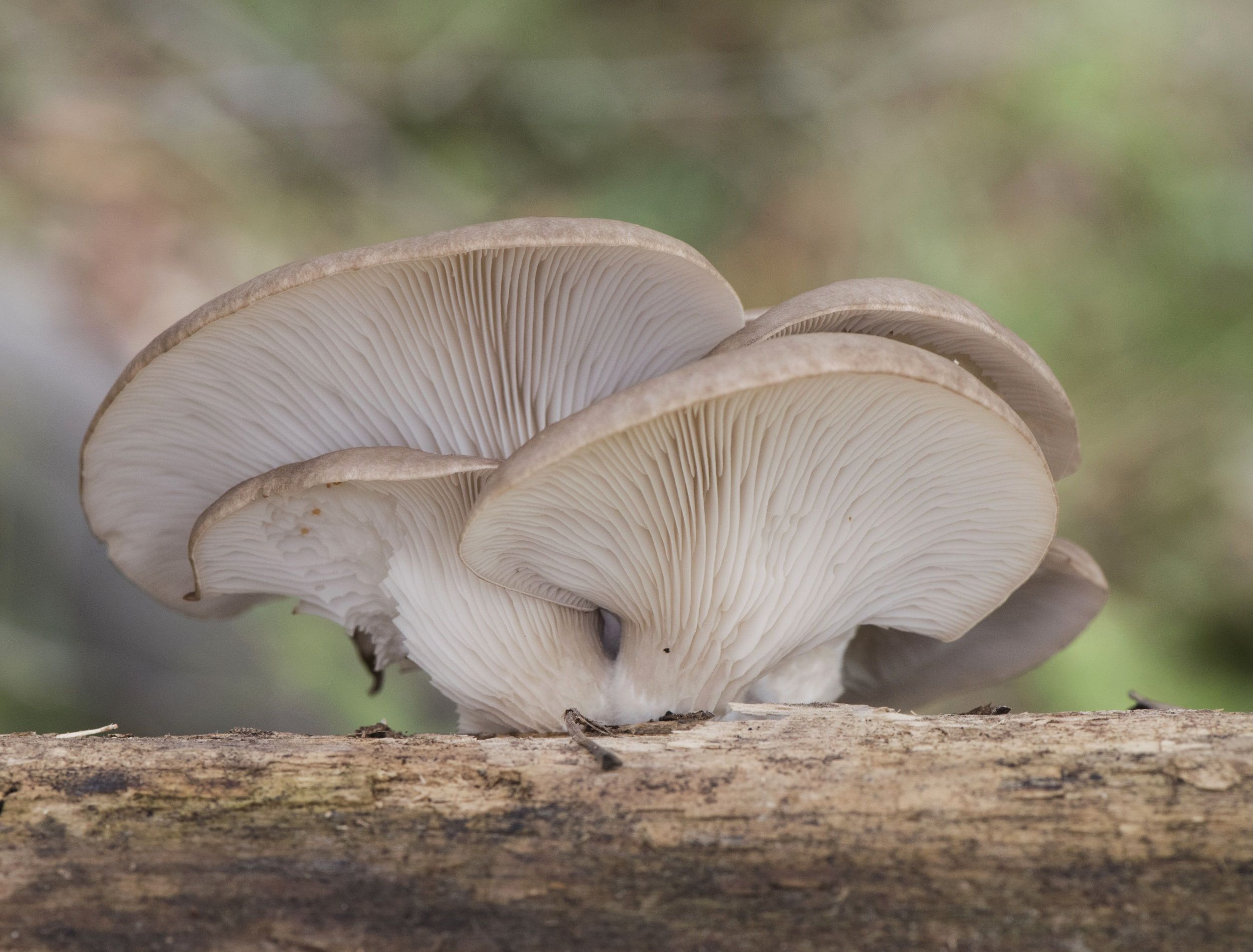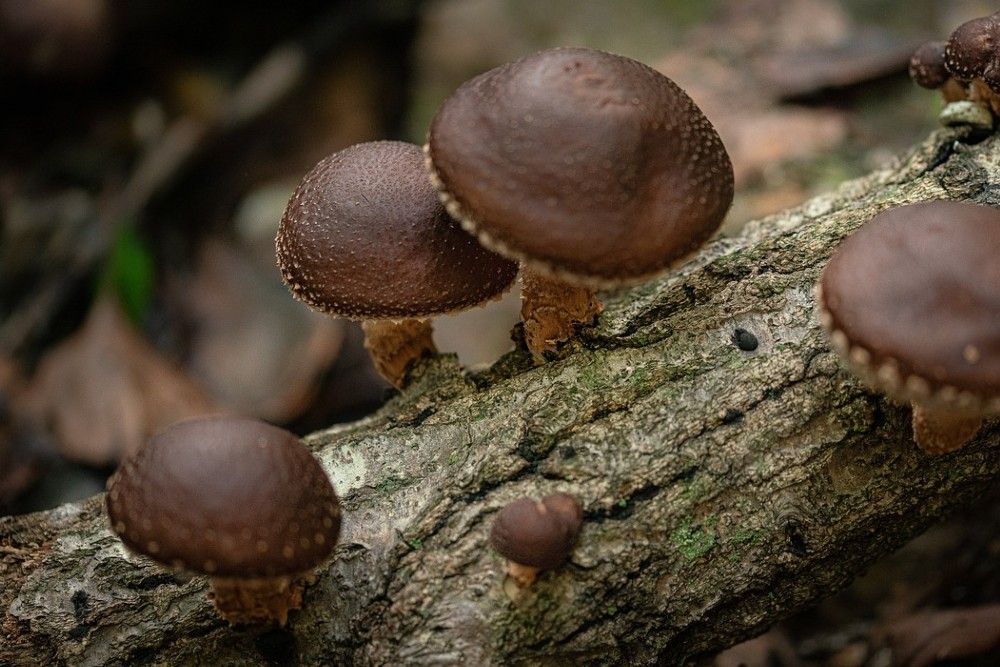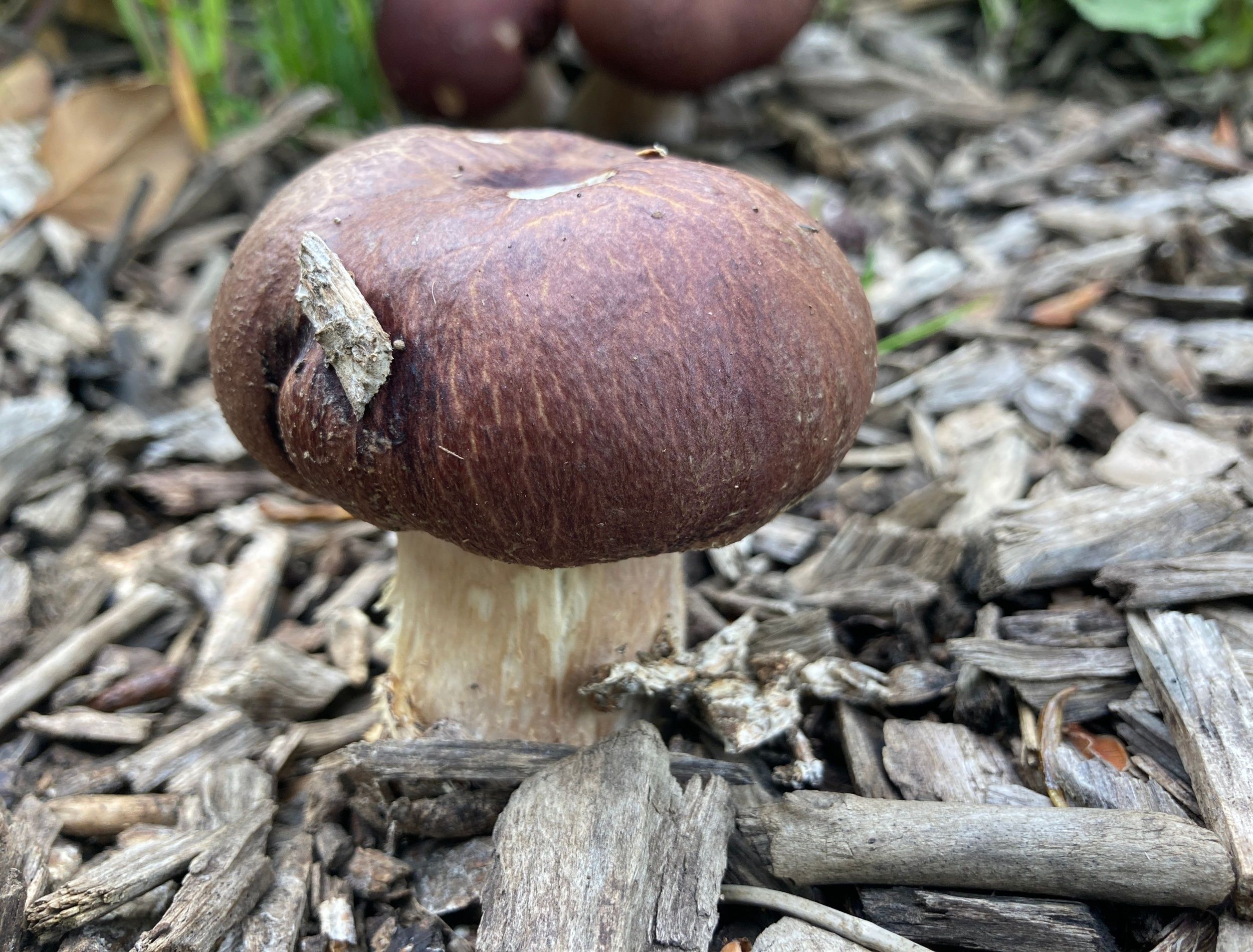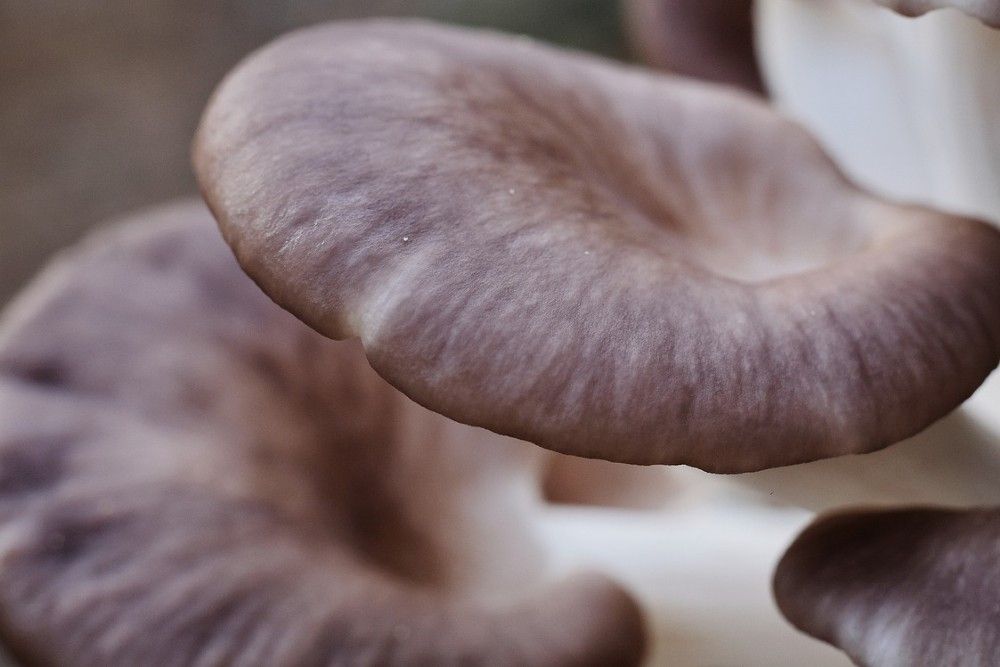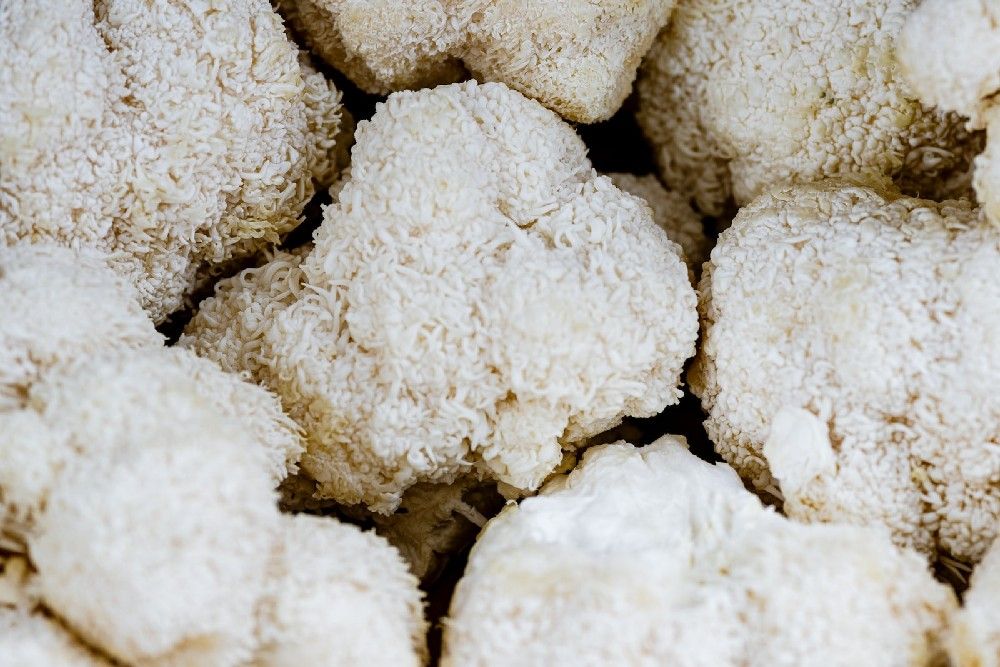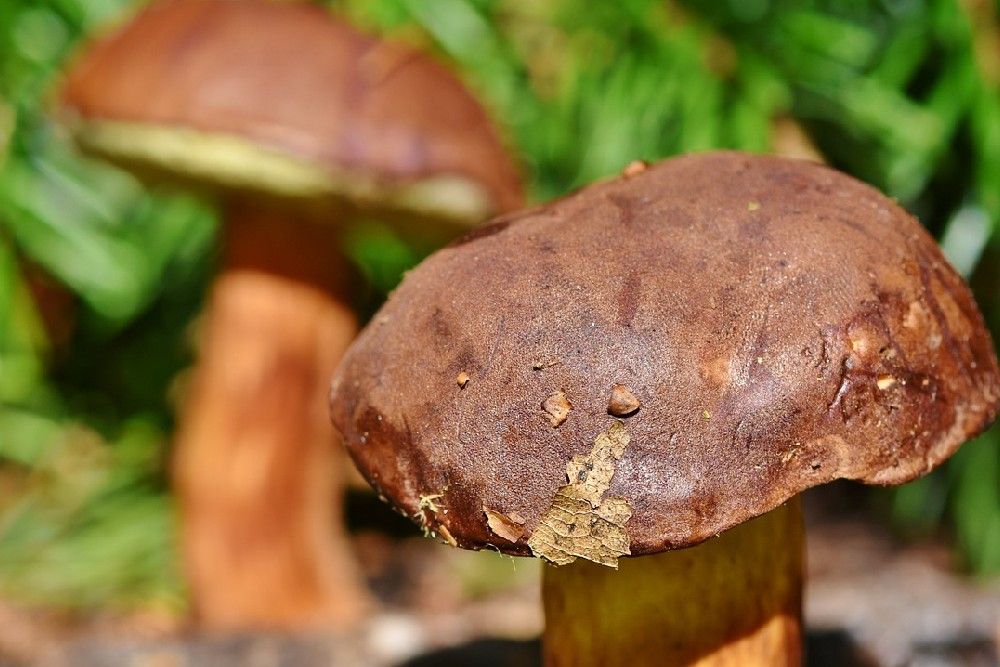Mushrooms are intriguing fungi with their earthy taste and meaty flavors. They make a distinct impression when included in any dish and are often the highlighting feature of a culinary experience.
They are also relatively simple to grow, depending on your route. You can buy helpful mushroom growing kits for smooth sailing, get commercial spawns and prepare the substrate (growing medium for mushrooms), or start everything from the ground up and grow mushroom spawn at home. Regardless of your chosen method, here are a few edible mushrooms to grow at home in your garden!
1. Shiitake
Image credits: chulmin1700 via Pixabay
Shiitake mushrooms are great to grow in your home garden as they don’t take up too much space and taste delicious. They are distinguished by their dark brown umbrella-shaped tops that curl inwards at the edges. They possess an earthy, smoky flavor and a dense, meaty, yet buttery texture.
These mushrooms can grow on a cellulose-rich material, such as logs or sawdust. The best woody substrate for them is oak, though you can also grow them on softwood by adding additional nutrients such as bran and sugar.
Shiitake mushrooms take about five to 12 months to grow and produce a lower yield than other varieties. To grow these mushrooms, drill holes on the entire log’s surface at even intervals and inoculate with Shiitake dowels pushed under the surface. Seal with hot wax and place the log in a shaded spot. Hose with water once or twice per week until fruiting.
The log usually fruits two times per year, in spring and autumn. However, you can force it into fruiting more frequently by soaking the log in cold water for a day or two and then placing it upright in a shaded area protected from the wind. Perform the cold shock six to eight weeks after the previous harvest to allow the log to rest and prepare for the next crop.
2. Wine Cap
Image credits: Niki Florin via Shutterstock
Wine caps are great to grow outdoors. The burgundy, red-topped mushroom has purple-grey gills and a distinct white stalk. The tops change appearance from broad, bell-shaped caps to flat tops when they reach maturity.
Grow these shrooms in raised garden beds filled with fresh wood chips and partially decomposed compost. Spread the spores on top of the bed and cover them with a thick layer of compost. Water frequently until mycelia (a network of white thread-like fungi) fills the bed.
In a few weeks, your flavorful mushrooms will be ready for harvest. Leave a few mushrooms remaining in the bed, so they can open their caps and spread the spores. However, do that only if you don’t mind these shrooms popping up around your garden. Otherwise, pluck all of them as soon as they are mature.
3. Oyster
Image credits: mrngochuy via Pixabay
Oyster mushroom is another variety that does well outdoors. Unlike most mushrooms, oyster grows in vibrant colors, such as blue, pink, and yellow depending on the variety. It has a mild woody taste with delicate seafood flavors. You can grow these mushrooms in your garden on a straw bed, between temperatures 55 and 75 degrees Fahrenheit, depending on what type you decide to grow.
Blue oysters are the easiest to grow and produce a higher yield. They grow in cooler temperatures, between 50 and 68 degrees Fahrenheit. The pink ones are the fastest-growing mushrooms, fruiting within three to four weeks. They are tropical mushrooms, thriving in warmer temperatures, between 65 to 89 degrees Fahrenheit.
Grow these mushrooms in a garden bed located in a shaded area filled with a mixture of straw and spawn. Water your bed daily in the beginning, tapering off the frequency as the weeks go by, but don’t let the garden bed dry out. You will soon see a flush of mushrooms emerging, ready for harvesting.
4. Lion’s Mane
Image credits: Kier... in Sight via Unsplash
Lion’s mane mushrooms are commonly found growing on decaying trees. The variety gets its name due to its fruiting bodies covered with white spines that cascade downwards like a shaggy lion’s mane. It also has a distinct flavor and texture resembling lobster and seafood tastes.
You can grow these mushrooms outdoors on logs to emulate their natural growing environment. Inoculate your log using commercially available spawns and provide it with a moist environment by spraying water about twice a day during dry spells. Be aware, you should not aim at the mushroom itself. This method can take at least a year for the mushrooms to appear.
Keep your substrate away from direct sunlight in a shaded spot in your garden. The best part is that a single inoculated substrate can produce several flushes year after year without adding more spores, usually when the weather is slightly cooler. It can be late spring or fall, depending on where you live.
5. Pioppino
Image credits: Ralphs_Fotos via Pixabay
Pioppino or chestnut mushroom has an earthy, nutty flavor, making it an exciting choice to grow at home. These mushrooms are recently gaining popularity in the US but are frequently used in soups, sauces, and stews in Asia. They have a unique shape with a long stem and a small brown cap with a velvety texture.
You can grow pioppino mushrooms outdoors in garden beds filled with hardwood chips or sawdust. You can also grow them on hardwood logs. They are some of the few mushrooms that require some light to grow, so plant them in an area with low or indirect light but protected from direct sun.
Regular watering keeps your substrate moist at all times to provide a humid environment ideal for growing mushrooms. Additionally, they need fresh airflow for optimal growth and a healthy crop.
Mushrooms for the Win!
You can grow mushrooms indoors and outdoors, depending on the variety. Indoor cultivation is slightly easier as you have more control over the elements than the unpredictable outdoors, but the process is rewarding either way. Among the wide mushroom varieties that perform well outdoors are shiitake, oyster, wine cap, lion’s mane, and pioppino!
Are you interested in growing mushrooms in your garden? Share in the comments below!

